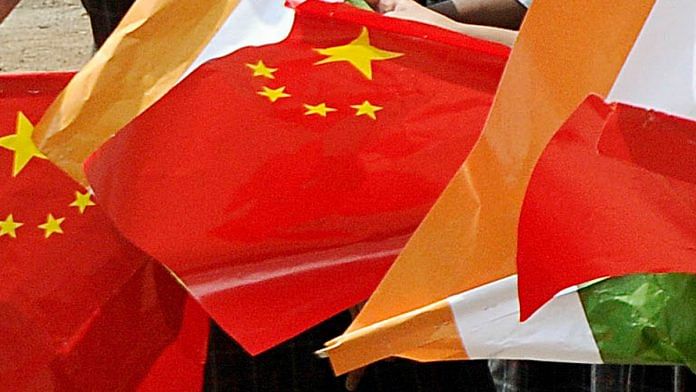New Delhi: As India and China sit down for the first-ever joint military and diplomatic-level talks at the Chushul-Moldo meeting point on the Chinese side of the Line of Actual Control Monday morning, the focus will be on complete disengagement in all trouble areas and not just the southern bank of Pangong Tso that China is insisting upon, ThePrint has learnt.
India is being represented by 14 Corps Commander Lt. Gen. Harinder Singh, along with two major general-rank officers, four brigadiers and other colonel-level officers and translators. They are joined by Navin Srivastava, joint secretary in the Ministry of External Affairs who looks after China. Indo-Tibetan Border Police Inspector General Deepam Seth is also a part of the delegation.
Also present at the meeting, which began at 9.30 am, is Lt Gen P.G.K. Menon, who has commanded a mountain division on the China border in the east. He is likely to replace Lt Gen Singh, who is being posted out as the 14 Corps Commander after completing his 12-month tenure in October.
Sources in the defence and security establishment said the talks would take place under the new rules of engagement, which forgo the earlier concept of “equitable disengagement”. The sources also made it clear that the Chinese will have to undertake the disengagement steps first for India to follow suit.
They said since India’s pre-emptive operation at end of August, in which forces outflanked Chinese troops and occupied heights on the southern bank of the Pangong lake, China has been pushing India to withdraw from this area during several brigadier-level talks.
“However, we have been very clear that disengagement and de-escalation will have to happen at all places simultaneously. Also, China needs to take the first step since it was the People’s Liberation Army (PLA) that violated border agreements and trespassed into Indian side of the LAC,” a source said.
One of the biggest challenges to disengagement is for China to put its words of wanting peace at the LAC into action. This becomes more important as the fifth plenary session of the 19th Central Committee of the Communist Party of China (CPC) is scheduled in October.
During the previous five rounds of corps commander-level talks, disengagement was based on mutual withdrawal of equal distance. While these steps were successful in the Galwan Valley and Hot Springs area, they weren’t successful on the northern bank of the Pangong Tso, where the Chinese had come in by 8 kilometres. This meant that India could not pull back from an area it dominates, and has had bases in for long.
ThePrint reported on 16 September that China had not been confirming dates for a fresh round of corps commander talks, despite agreeing in principle several days ago.
This prompted India to not to leave anything to chance, and become “extra sensitive” along the LAC, and even the Line of Control and the western border with Pakistan.
Also read: Why Depsang Plains, eyed by China, is crucial for India’s defence in Ladakh
Winter approaching
The military and diplomatic talks come at a time when the winter is approaching. India and China have never deployed troops at locations that are this far forward along the LAC in winter, when the temperature drops to minus 30 degrees Celsius, along with very strong winds.
However, unlike Chinese troops, Indian soldiers are used to deployment in such weather at the Siachen Glacier and other sectors along the LoC with Pakistan, where the Army maintains troops round the year.
This report has been updated to reflect that the talks started at 9.30 am.
Also read: Army could induct ‘another division of troops’ in eastern Ladakh as China continues build-up







China had unilaterally ceased fire in 1962 & withdrawn from some areas while continuing to occupy & annex some areas.Though “peace talks” have been held since then & both sides have agreed to maintain peace & tranquility at the border China has in recent times violated these agreements crossed the LAC & broke trust.China cannot treat India as a weak neighbour & try to take advantage. Indian Forces have had to fortify its Himalayan borders only after China has demonstrated its apetite for territorial expansion .Consequently, tensions have risen.China must act responsibly & restore status quo ante.India will not give a walk over & is determined to defend its territory.India wants peace.China must honour agreements reached.